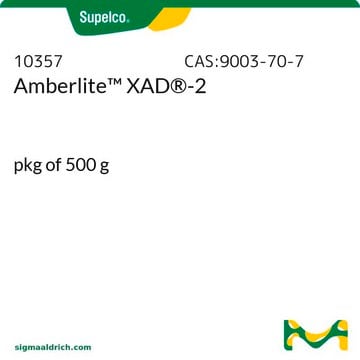20254-U
ORBO™ 101 Carbotrap® B (20/40), 100/50 mg
W,W,W separators, O.D. × L 6 mm × 70 mm, pkg of 25 ea
Synonym(s):
ORBO™ Carbotrap® Tube
About This Item
Recommended Products
material
W,W,W separators
product line
ORBO™
composition
Bed A, 100 mg
Bed B, 50 mg
packaging
pkg of 25 ea
manufacturer/tradename
ORBO™ 101
technique(s)
active air sampling: suitable
O.D. × L
6 mm × 70 mm
matrix
Carbotrap® B Graphitized Carbon Black (GCB) (20/40)
particle size
20-40 mesh
application(s)
air monitoring
environmental
industrial hygiene
Looking for similar products? Visit Product Comparison Guide
General description
Legal Information
Storage Class Code
11 - Combustible Solids
WGK
nwg
Flash Point(F)
Not applicable
Flash Point(C)
Not applicable
Choose from one of the most recent versions:
Certificates of Analysis (COA)
Sorry, we don't have COAs for this product available online at this time.
If you need assistance, please contact Customer Support.
Already Own This Product?
Find documentation for the products that you have recently purchased in the Document Library.
Our team of scientists has experience in all areas of research including Life Science, Material Science, Chemical Synthesis, Chromatography, Analytical and many others.
Contact Technical Service



